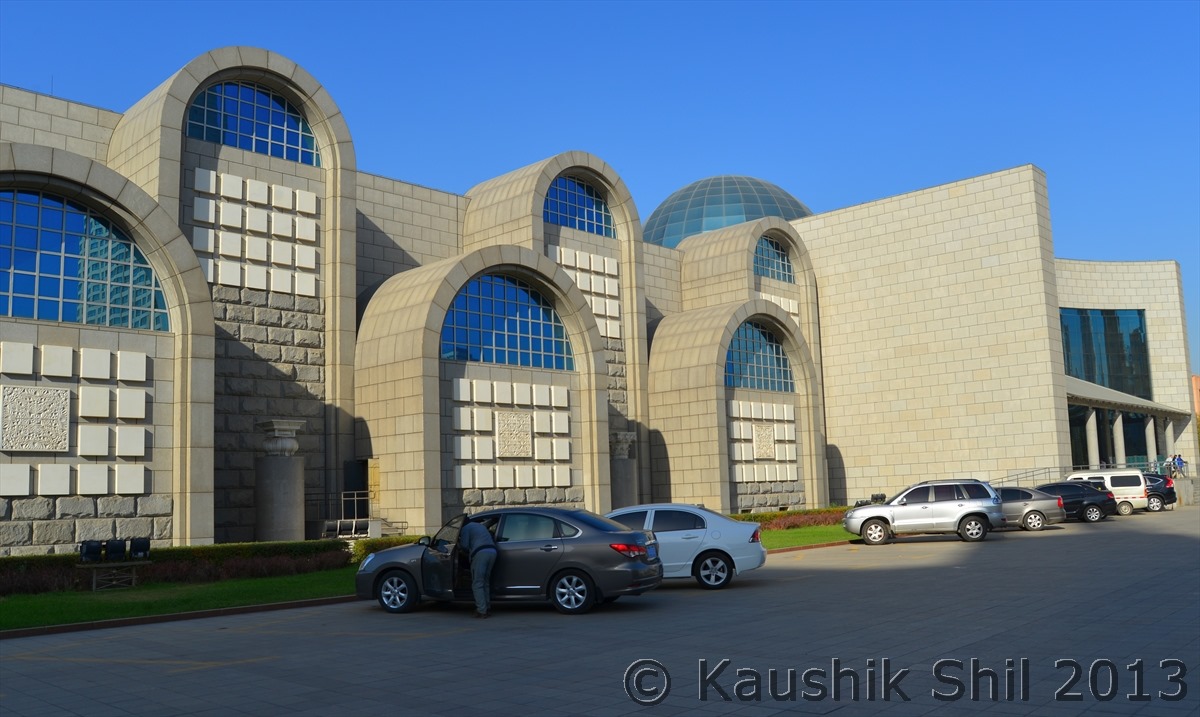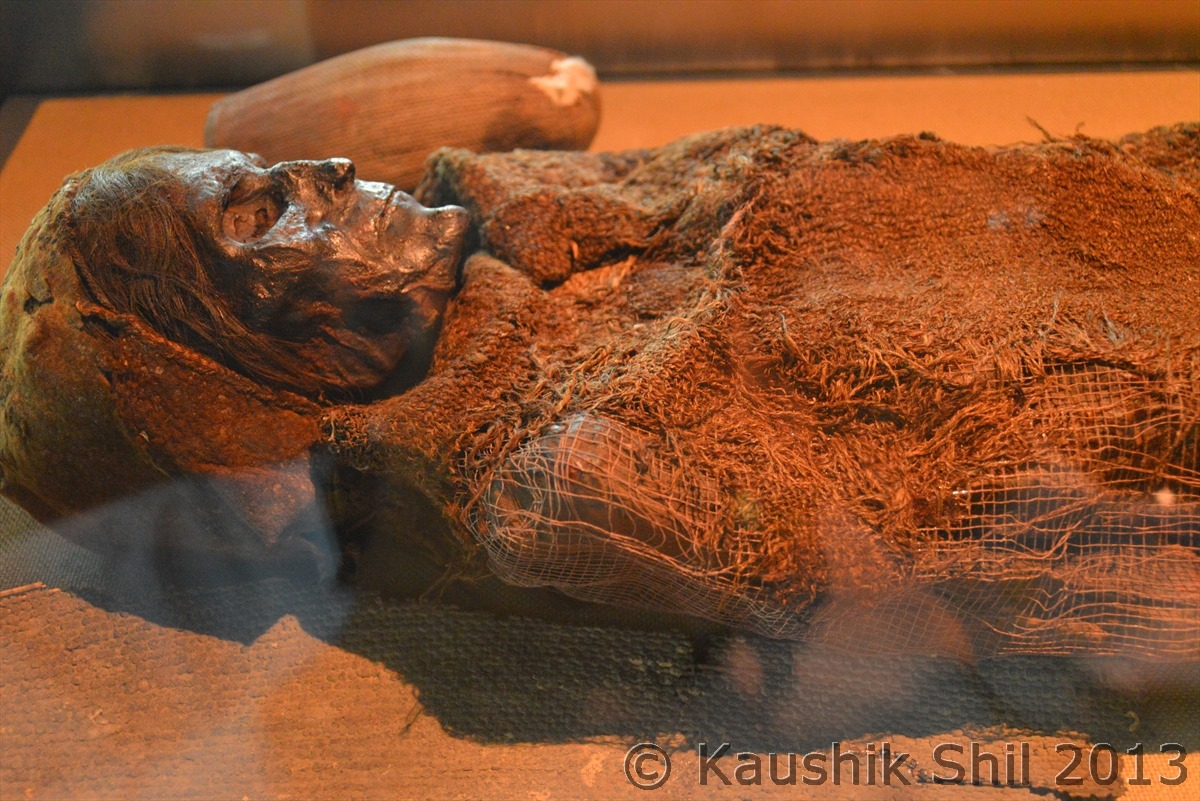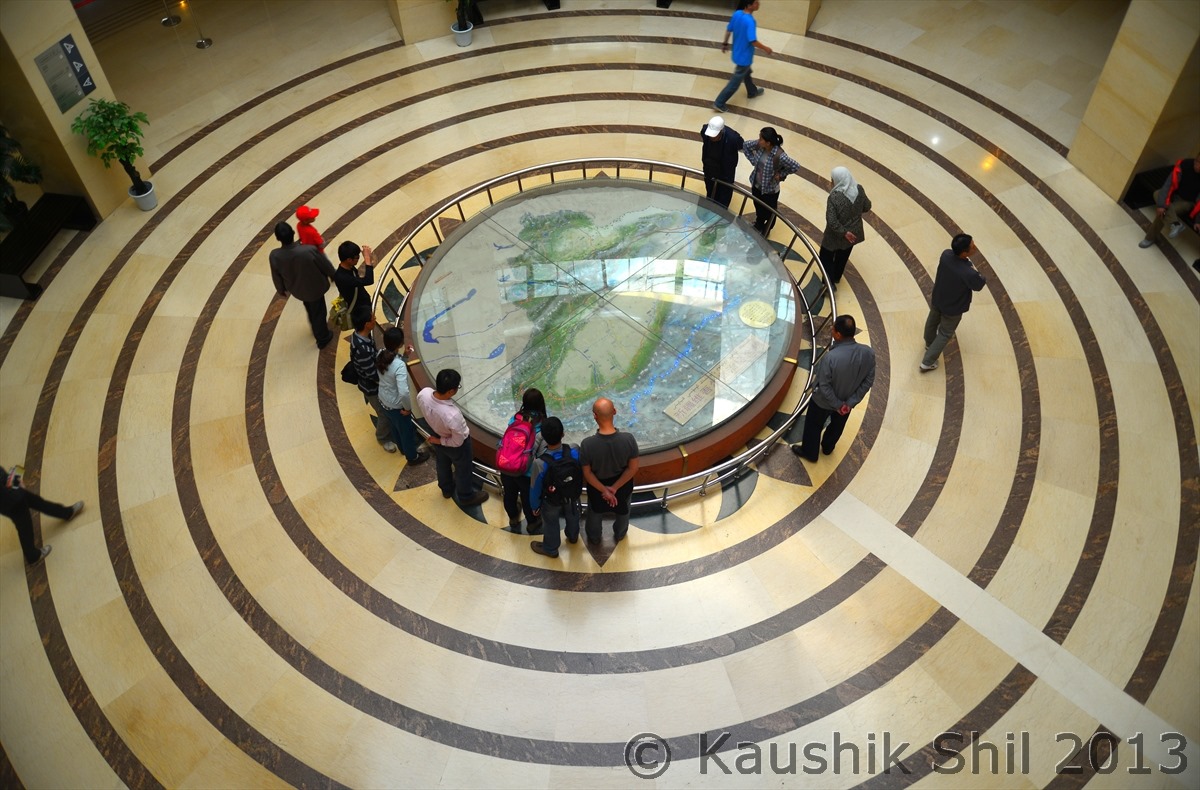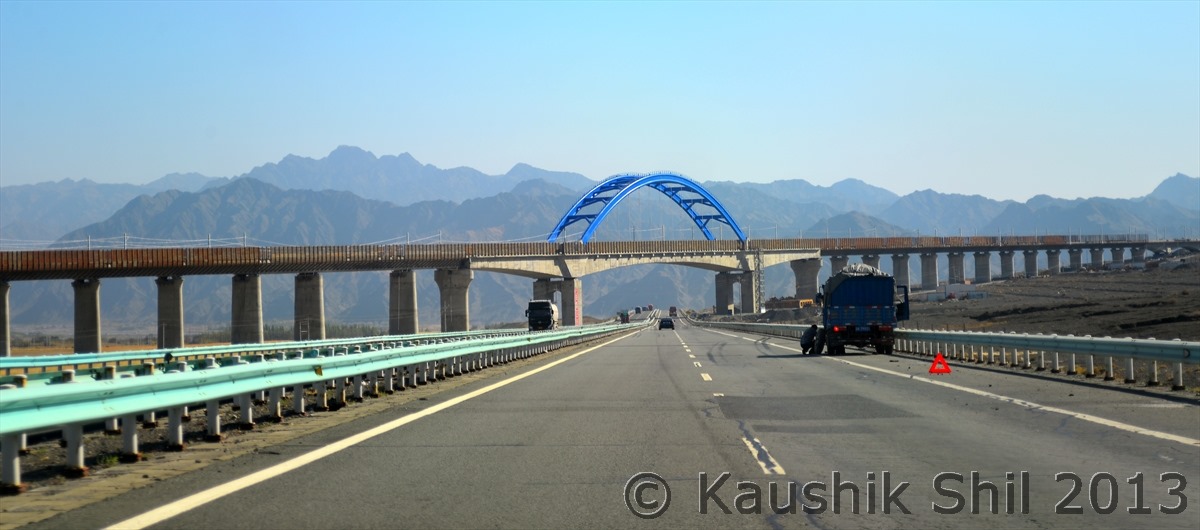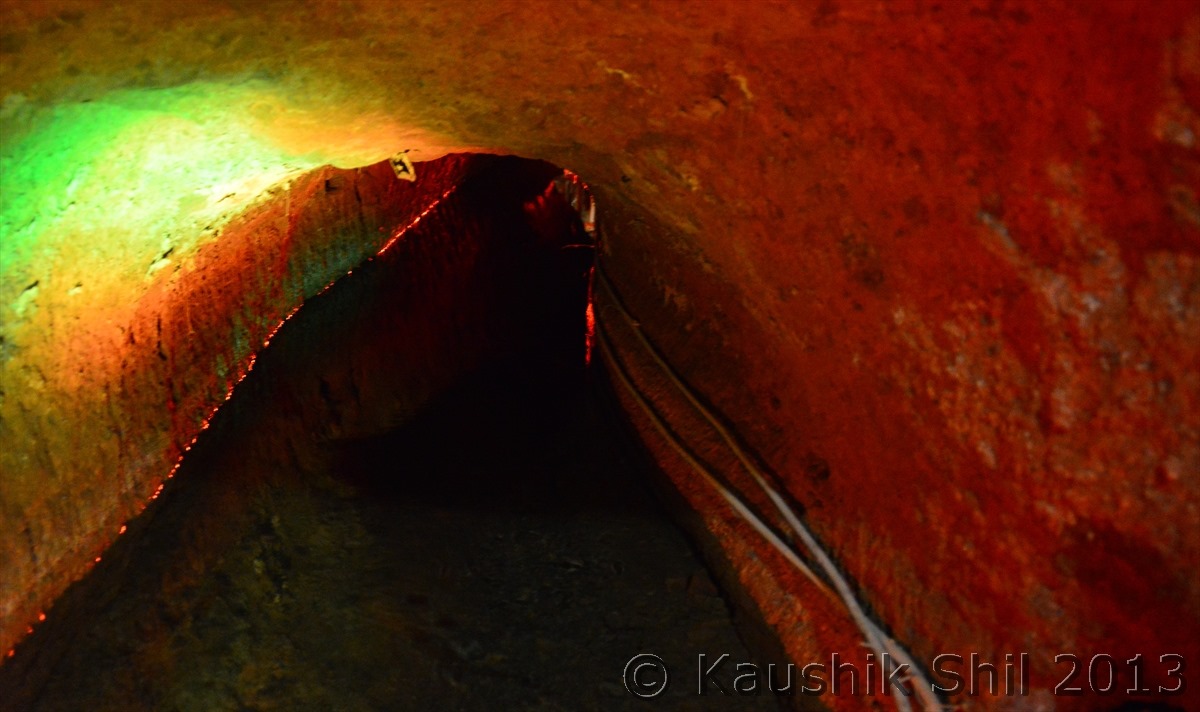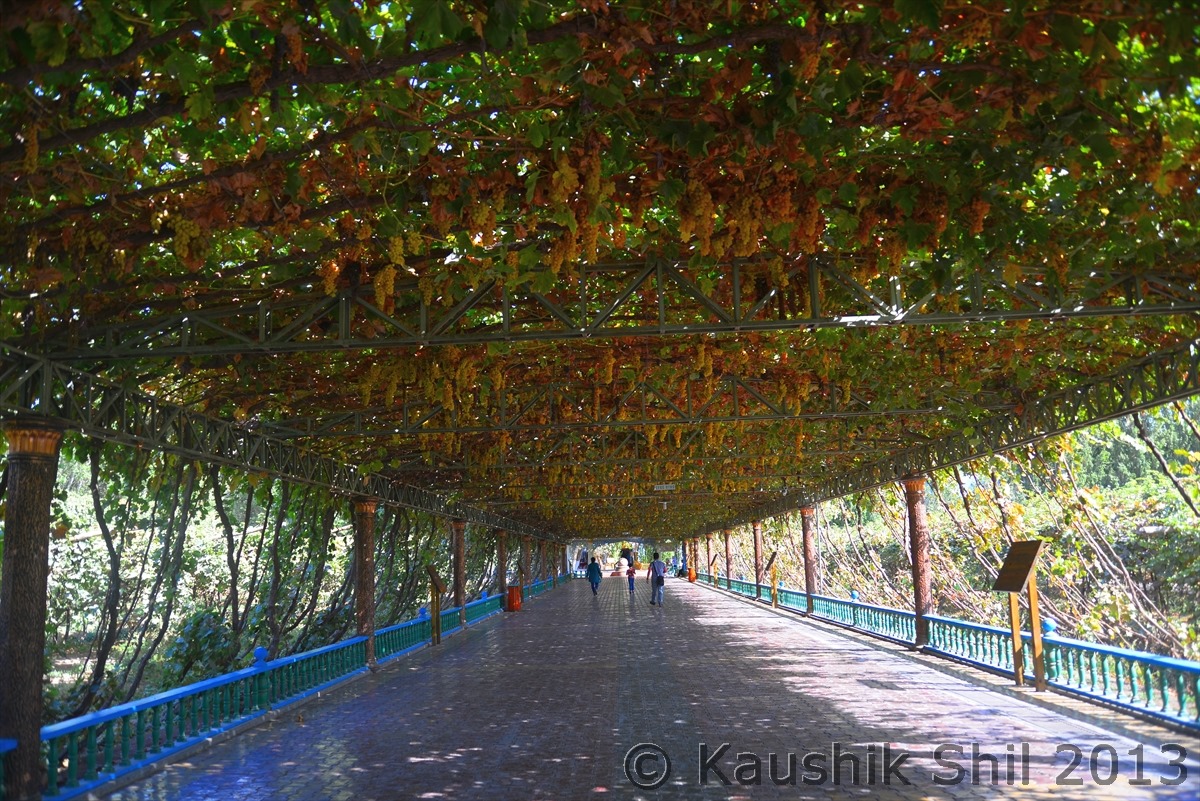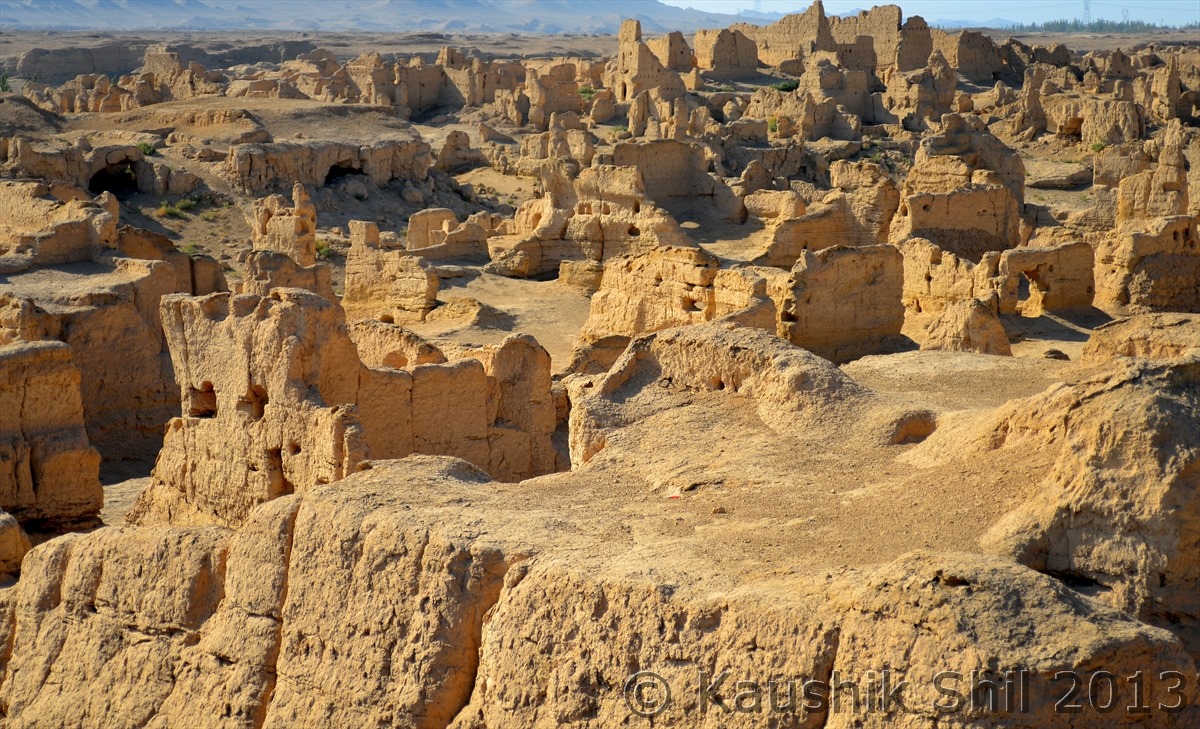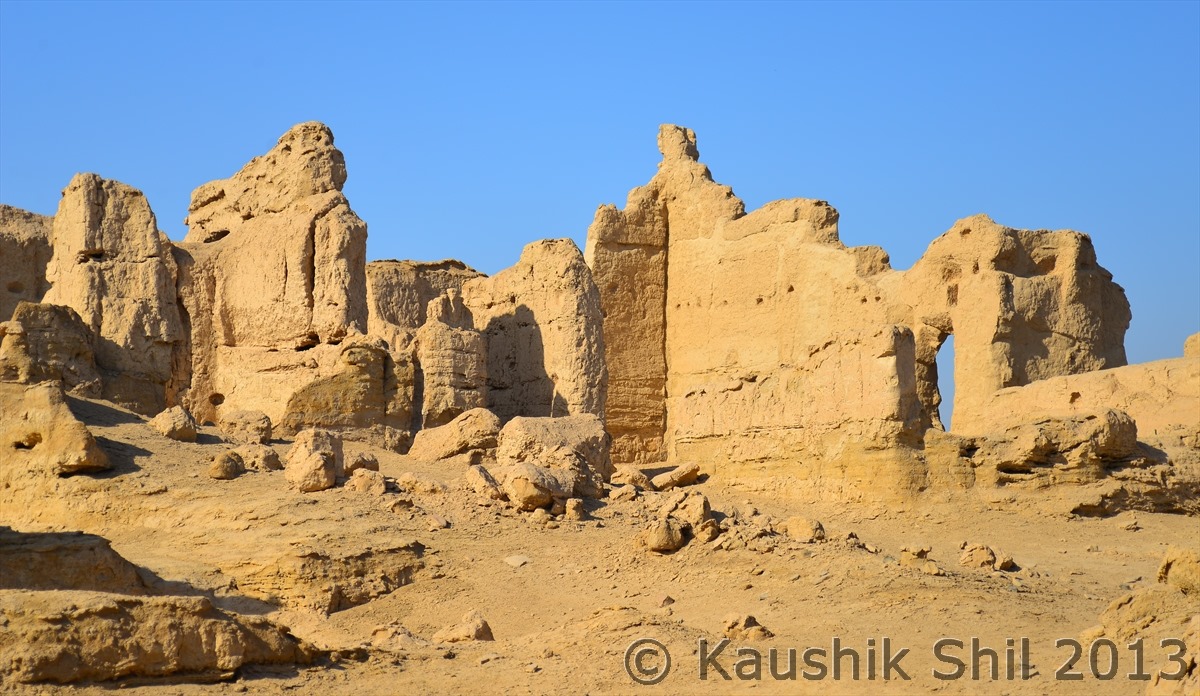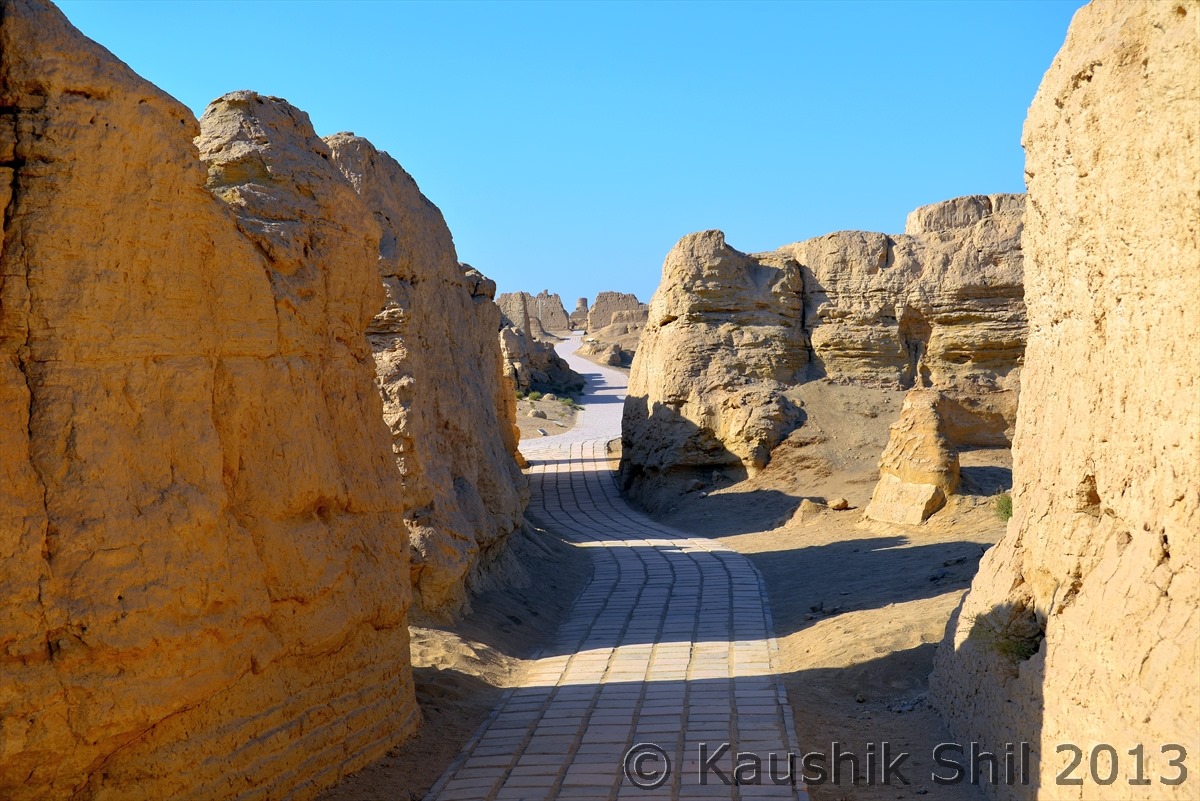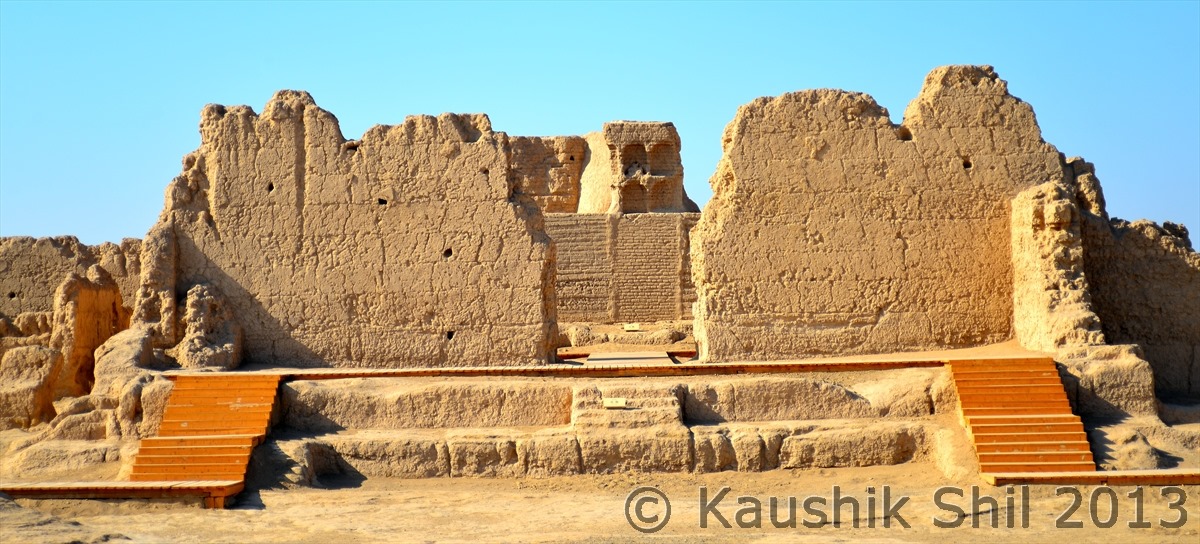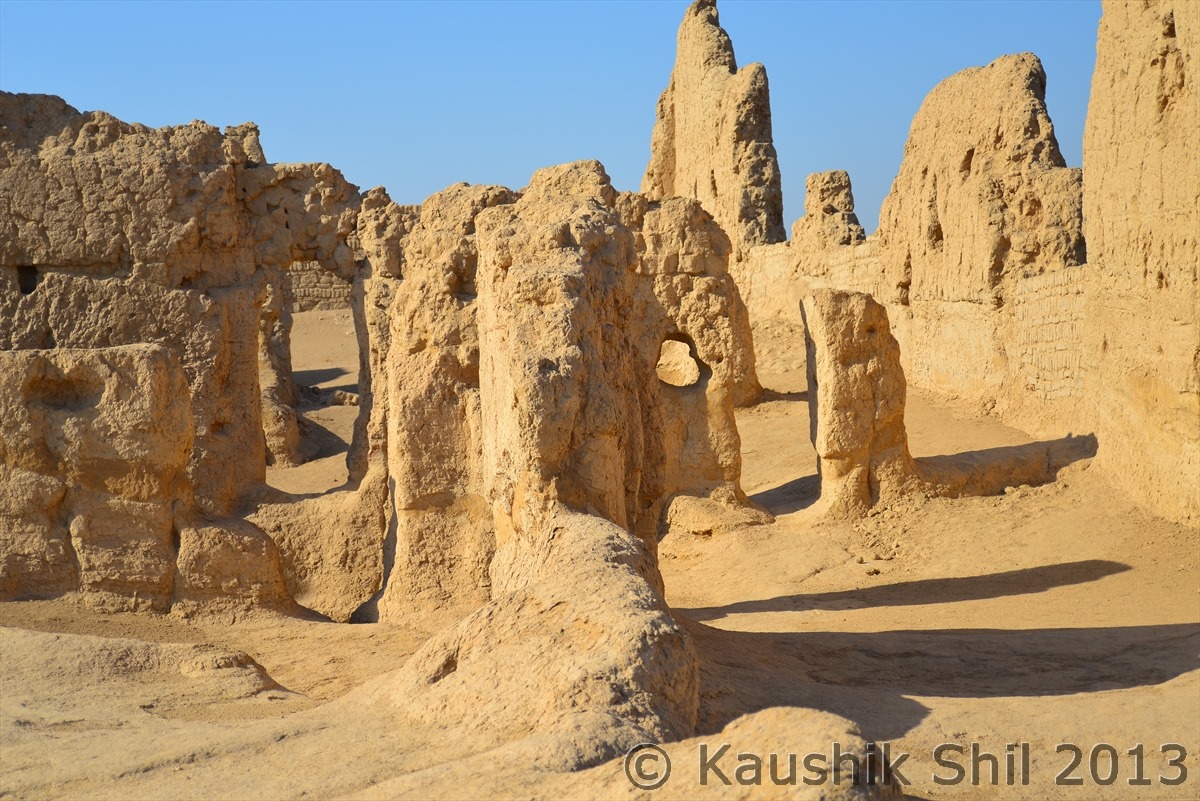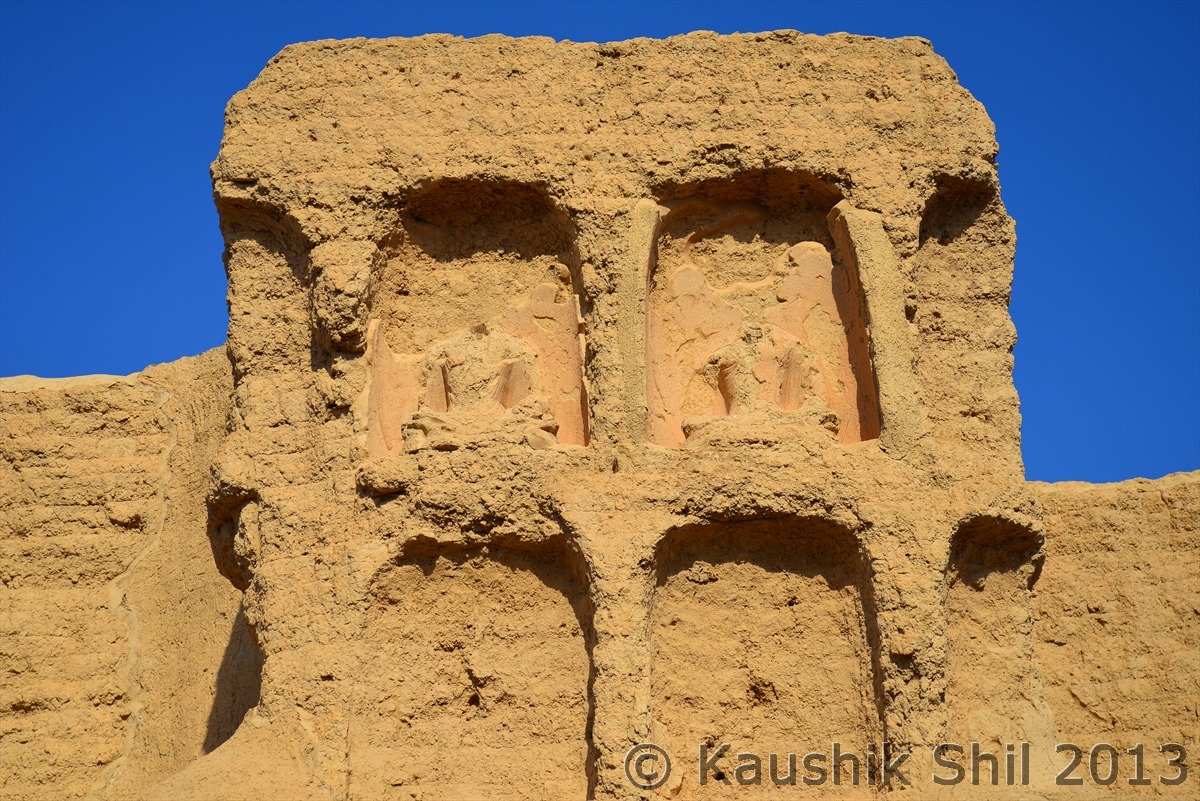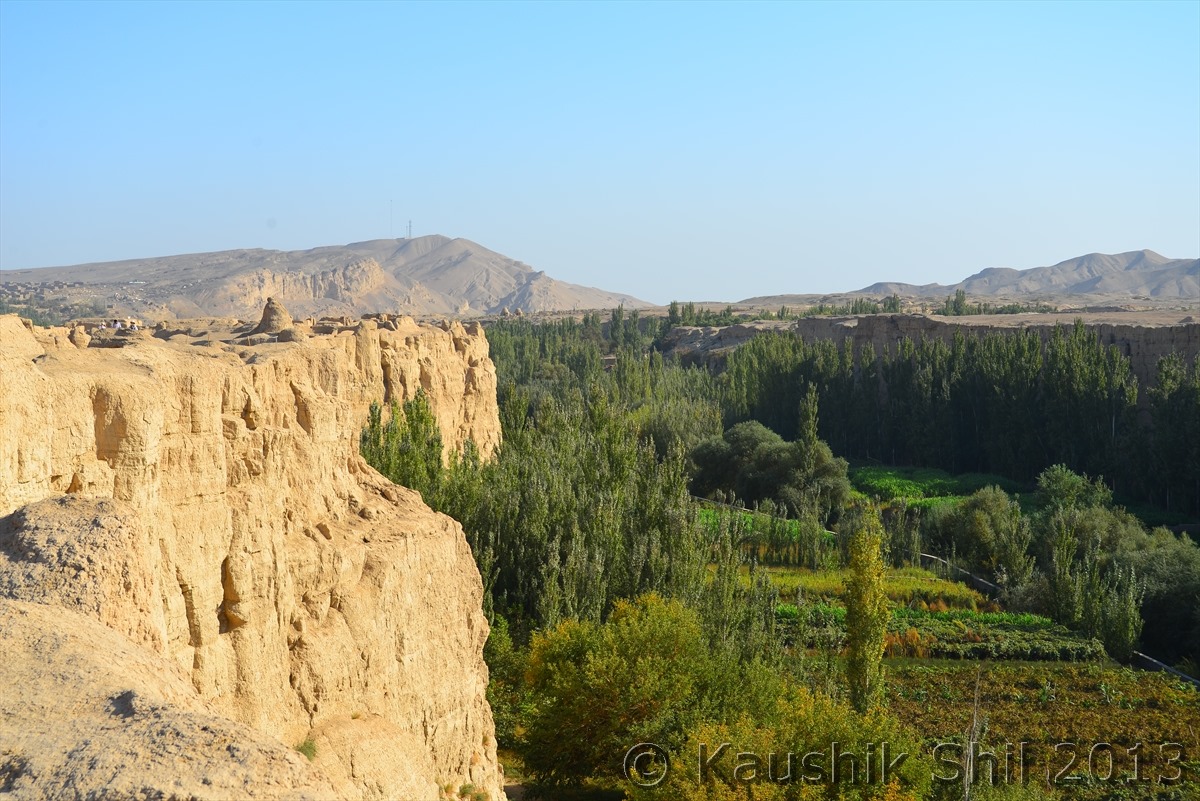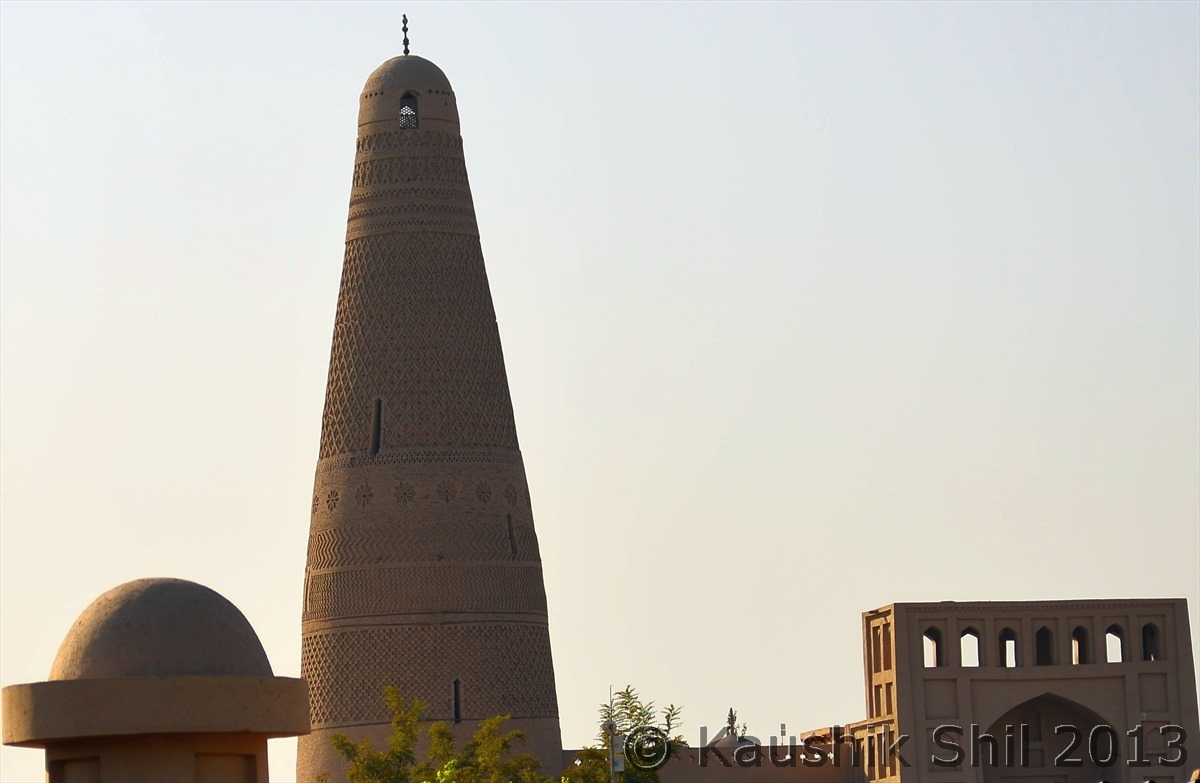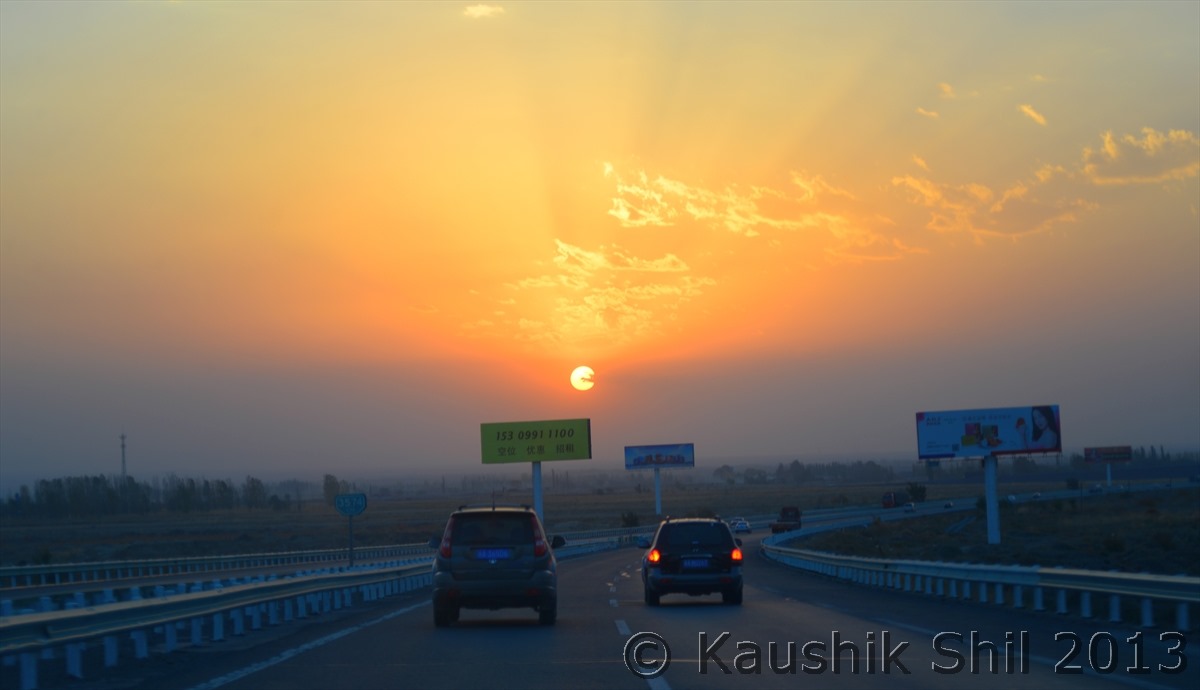Day 17:
We took rest in the hotel in morning after a long hectic drive for last fortnight. We had a wonderful western breakfast at Chini Bagh hotel after a long time, relaxed and ultimately got confirmation for my Tibet Train Tickets from Xining through my Tibet Travel agent. We got 3 soft sleeper tickets in same compartment in the evening train as we asked for, which was not easy, more details on this when we would cover Tibet section. So at last on very last moment I became little confident about my Tibet trip. Kashgar airport is not very big but had a very tough security checking and they didn’t allow us even to carry Kid’s medicine in hand luggage, I had to return to check in counter 4 times to put something or other they were discovering from hand luggage which was not permissible to carry as per their security standard. Most irritating fact was they took 4 rounds of searches to make themselves satisfied and I had to go through security checks for 4 times. We crossed Taklamakan diagonally to North East and reach Urumqi just before evening. We said good bye to Hasan, another wonderful person we luckily have for our Southern Xinjiang trip and received by our old friend Ablajan again in Urumqi Airport for our short 2 days trip in Xinjiang before we would fly out to Xining.
Day 18:
The day we had planned for our day trip to Turpan. No Xinjiang trip is completed until you visit Turpan, the second lowest point in planet Earth after Dead Sea of Jordan. But before that we had two important things to do. First was to collect the Tibet train tickets, in China though train tickets can be bought in internet, you need to have original paper ticket with you before you can board train, no e-ticket is allowed to board the train. So with confirmation number and identity card you need to collect your paper tickets from any train station or city booking office of Chinese railways. But if you collect it from origin station of your journey, it is free where as from any other places if you collect the paper ticket, you will have to pay 5 CNY per ticket. I thought paying 5 CNY and getting ticket from Urumqi is easier with help of Ablajan than to collect it in Xining by speaking Chinese with counter guys. So after collecting the train tickets we visited the Urumqi Museum which is known as XUAR Museum and a must visit destination for anyone travelling to Xinjiang as it is the best place to get detailed overview of Xinjiang’s many millennia of human civilization. The most famous exhibits of the museum are famous Xinjiang Mummies. The mummy named as Loulan Beauty was excavated from Lop Nor region was of a 45 years old woman of Indo European origin with read hair, thin nose and covered with red brown rough wool blanket. According to Chinese archaeologists this mummy was dated back to 1800 BCE.
As we had to visit Turpan, we didn’t spend much time in museum, rather started for Turpan (in Uighur means land of fire ) which is hottest place in china, temperature in summer goes above 45 degree C and in winter goes down to minus 20 degree C and infamous for blustering winds that often whip the city. Rainfall is lowest among China, annual rainfall is just 20mm. It took around 2.5 hours to cover the distance from Urumqi to Turpan through the 6 lane expressway. Turpan was an important trade hub of silk route was mentioned in history as early as first century. Until fifth century CE the capital of the region was Jiaohe which was our first destination in Turpan. It is perched atop a narrow terrace like an island above 2 rivers (Jiaohe means confluence of rivers). The cliffs rise more than 30 meters above the river bed to form a formidable natural defense. The city was under control of Tibetans for more than a century and major center of Buddhism but later around thirteenth century invaded by Mongol armies of Genghis khan and abandoned since then. This is considered as most visually rewarding site of all Turpan’s outlying tourist attractions.
Our next attraction was Karez which is the ingenious underground irrigation system of ancient China. Without this engineering marvel supplying water in large quantities to an area of arid land that would otherwise not be fit for large scale human civilization. A Karez (means well in Persian) is comprised of series of wells and linking underground channels that tap subterranean water and use gravity to bring it to the surface at a destination lower than source. By this means water can be transported long distance in hot, dry climates without losing a large proportion of it to seepage or evaporation in a dry hot desert climate. These Karez were built 2000 years ago with the water source taken from Tienshan’s glaciers. Digging and maintaining Karez was a tough feat to achieve. It requires skill to understand the best place to dig and monumental effort to execute that in harsh weather conditions. Wells generally begin at the base of the mountains to tap good amount glacier melt water. The tunnel is then dug but again engineering accuracy is required to make sure the tunnel slopes at a lesser gradient than the contours of the land so that the water reaches the oasis close to the ground level where surface canals can distribute it to reservoirs. Generally underground tunnels are 1.5 to 2 meter height and around a meter wide and run at a stretch between 5 to 20 km, it was definitely not an easy job to do 2000 years ago. In Xinjiang region total 5500 km of Karez was discovered with more than 150000 wells providing an annual water output of 1000 million cubic meters. Today in Turpan still a part of it is in use to provide bulk of irrigation and drinking water for population. This Karez water system is considered as second best engineering marvel of ancient China after Great Wall demonstrating an astonishing level of engineering innovation and heroic human effort. It is evident that without this life saving attribute of Karez, the civilization of Xinjiang could never reach the size and sophistication that allowed the Silk Road to flourish. Due to this system Turpan became an agricultural oasis, famed for its sweetest grapes, white resins and wines in the middle of the extreme aridity and scorching heat that would otherwise make this a lifeless hell.
We had a plan to Shanshan desert but later abandoned the plan as we had to take a long journey back to Urumqi and next day early morning we had our flight for Xining, the gateway of Tibet Plateau. We reached Urumqi around 8.00 in evening and quickly took dinner and gone to bed. This ended our 18 days grand trip in most diverse province of China. Tomorrow we will be at Xining, capital of Qinghai Province to catch high altitude train to Tibet.
Urumqi Museum:
Loulan Beauty (4000 Years Old Mummy):
Museum Ground Floor From Top:
China’s Next Engineering Marvel: The High Speed rail corridor between Urumqi – Lanzhou – Beijing is in making, soon become another tourist attraction as it cuts through Gobi Desert where a 67 km long wind shield gallery is being built to protect the track from ferocious crosswinds of Gobi and then it will cut Kunlun Mountains via Qilianshan Tunnel at 4000 meter. It will going be highest High speed train corridor in world where trains will run at 350 kmph and reach Urumqi to Beijing 3500 km, overnight in less than 12 hours which now takes more than 72 hours, the work is close to completion now in 4 years:
Ancient 2000 years old Karez Underground Channels of water:
Grape Street of Turpan where on top of the roads grapes are being dried (Turpan is famous for sweetest grapes in China):
Jiahoe Ruins in Turpan (Dated Back to 3rd Century CE):
The main temple complex of Jiahoe (Remember it was a Buddhist town then):
The city Ruins:
Rock Cut Buddha is still visible:
See the Turpan Oasis in the middle of Desert:
Emin Minaret at Turpan:
Coming back to Urumqi – Sunset, our last day was telling us a grand good bye after an excellent Xinjiang trip and remembering Tibet is waiting for us:
Previous: Day 16
Next: Day 19 and 20/Part 1
